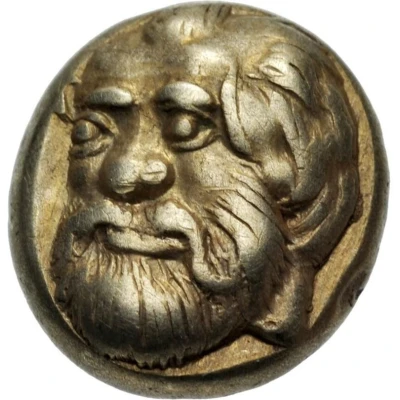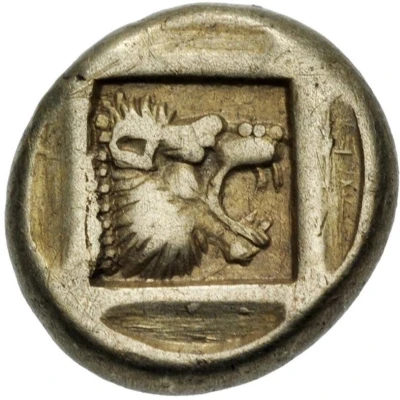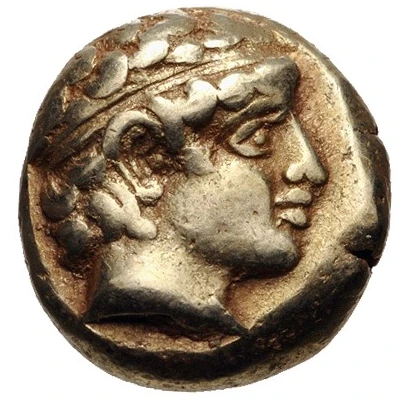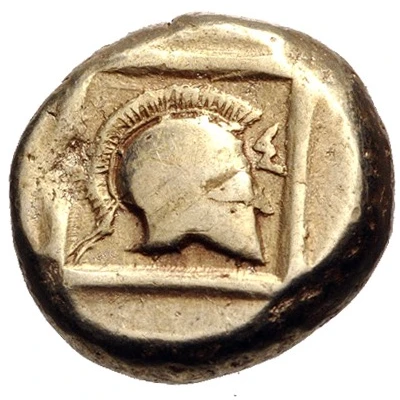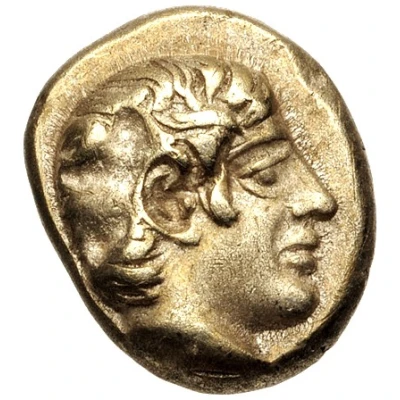
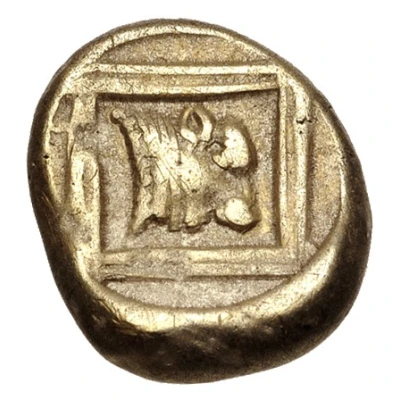

© Classical Numismatic Group, Inc.
Hekte 454 BC - 427 BC
| Electrum | 2.49 g | 10.0 mm |
| Issuer | Mytilene (Lesbos) |
|---|---|
| Type | Standard circulation coin |
| Years | 454 BC - 427 BC |
| Value | Hekte (14⁄3) |
| Currency | Drachm |
| Composition | Electrum |
| Weight | 2.49 g |
| Diameter | 10.0 mm |
| Shape | Round (irregular) |
| Technique | Hammered, Incuse |
| Orientation | Variable alignment ↺ |
| Demonetized | Yes |
| Updated | 2024-10-10 |
| Numista | N#178698 |
|---|---|
| Rarity index | 100% |
Reverse
Head of calf right in double linear square within incuse circle.
Interesting fact
The Hekte coin was used as a form of currency in ancient Greece, specifically in the city-state of Mytilene on the island of Lesbos. It was made of electrum, a naturally occurring alloy of gold and silver, and weighed approximately 2.49 grams. Despite its small size, the Hekte coin played a significant role in the economy of Mytilene and was widely used for trade and commerce. Its design featured an image of a lion's head, which was a symbol of strength and power in ancient Greek culture. Today, the Hekte coin is a valuable collector's item and a fascinating piece of history.
